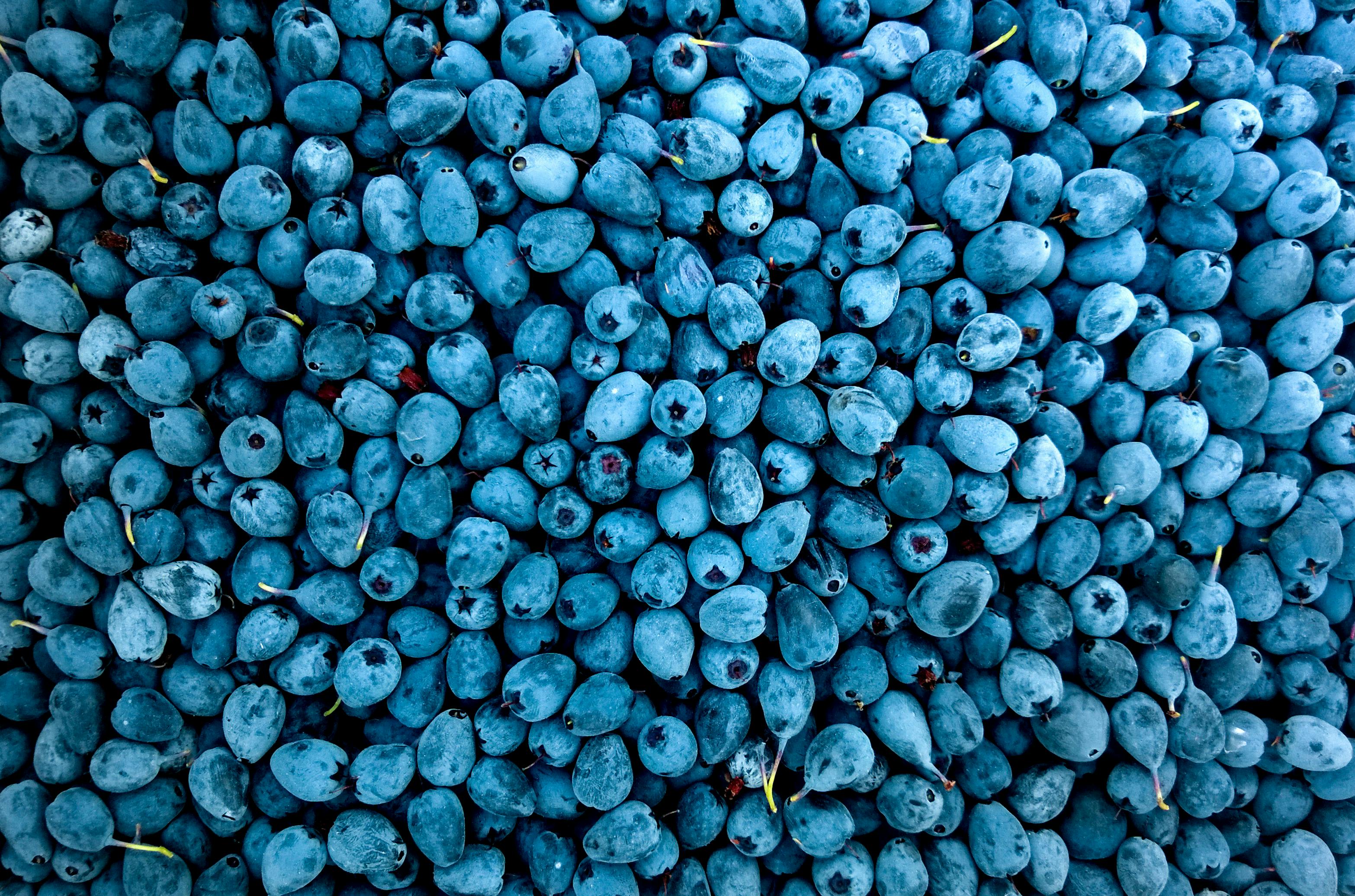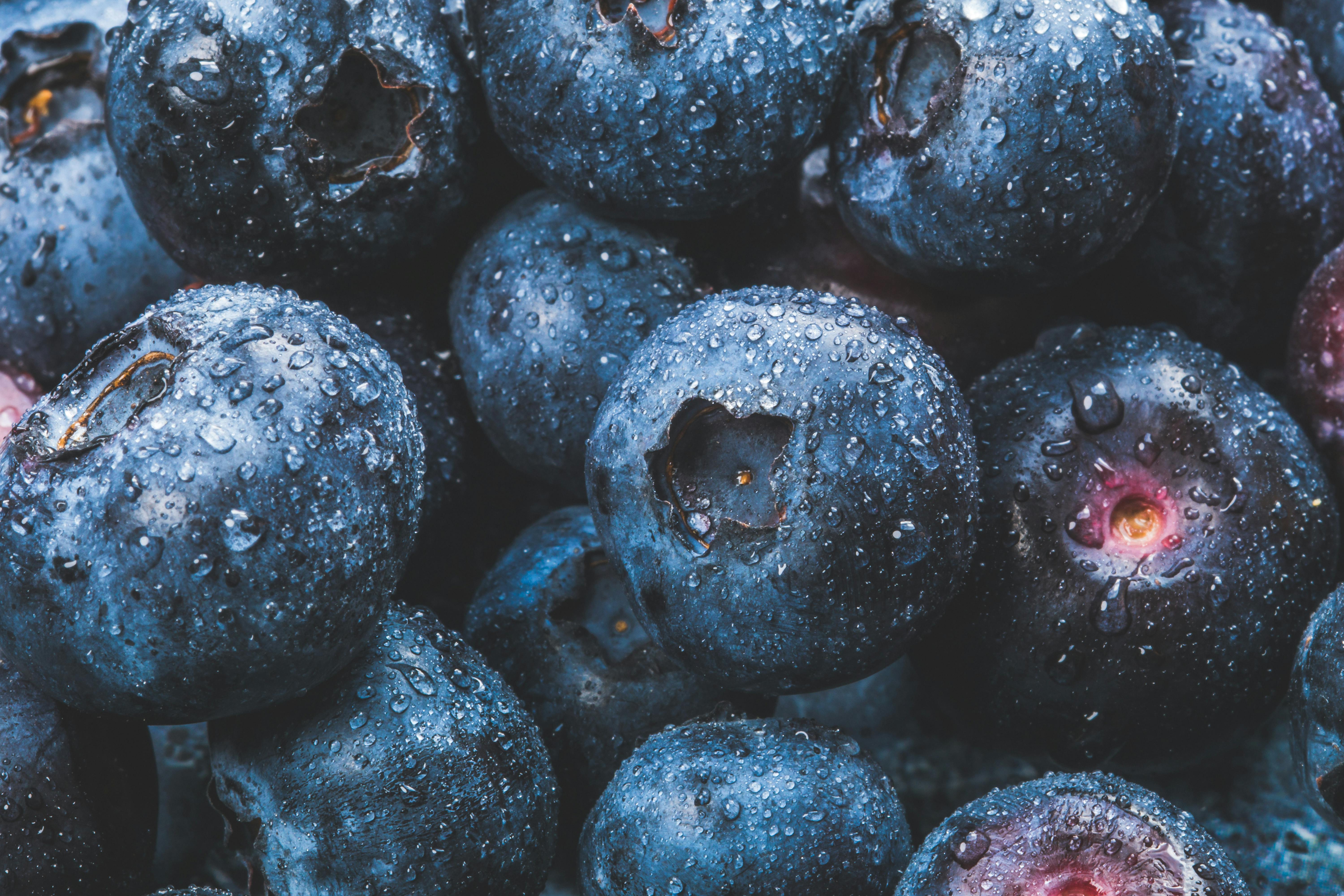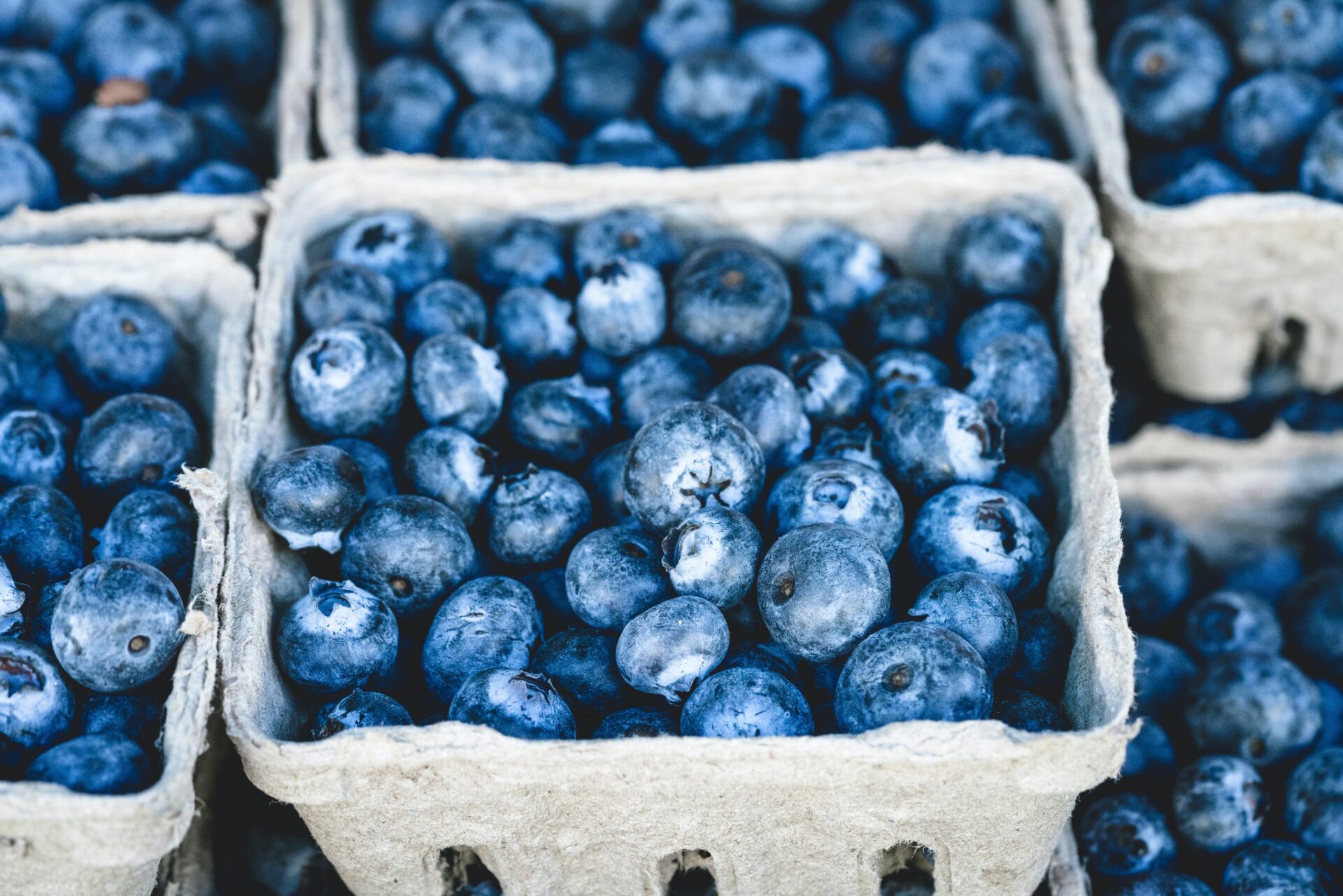Blueberries are one of the most beloved fruits in the world. Not only are they packed with nutrition and flavor, but they are also a vibrant blue color that makes them stand out among other fruits. But why are blueberries blue? It turns out that the unique color of blueberries is caused by a number of different things, including genetic factors, the environment, and even the ripening process. In this article, we’ll explore why blueberries are blue and some of their nutritional benefits.Blueberries have a blue color because they contain a pigment called anthocyanin, which gives them their deep blue hue. This pigment absorbs certain wavelengths of visible light which makes them appear blue to the human eye. The level of anthocyanin in the berry is determined by several factors including genetics, environmental conditions, and ripeness.
What Causes the Blueberry’s Blueness?
The deep blue hue of blueberries is caused by anthocyanins, which are a type of flavonoid. These compounds are highly concentrated in the skin and flesh of blueberries, giving them their signature colour. Anthocyanins also act as antioxidants, helping to protect cells from damage and reduce inflammation in the body. Additionally, they also provide a number of health benefits, including improved heart health and vision health. The amount of anthocyanins in blueberries varies depending on the variety, with some varieties containing up to twice as much as others.
The colours of other fruits and vegetables are also determined by different types of flavonoids. For example, red apples contain anthocyanins, while yellow bananas contain carotenoids such as beta-carotene. Carotenoids are also found in orange carrots and yellow squash. While these compounds give fruits and vegetables their distinctive colours, they also provide health benefits such as improved immunity and reduced risk of certain types of cancer.
It is important to note that while anthocyanins are responsible for the intense colour of blueberries, other factors can influence the hue as well. For instance, harvesting time can affect the colour of blueberries; berries picked later in the season tend to be darker than those harvested earlier on. The amount of sunlight that a plant receives can also affect its colour; plants grown in sunny climates tend to produce berries that are more deeply coloured than those grown in shade or low light conditions.
In conclusion, it is clear that anthocyanins play an important role in giving blueberries their signature hue. However, other factors such as harvesting time and sunlight exposure can influence this colour as well. By understanding these factors, it is possible to enjoy even deeper shades of blueberry-blue!
How Does the Color of Blueberries Affect Their Nutritional Value?
Blueberries are a popular fruit due to their sweet taste and health benefits. But did you know that the color of blueberries can also impact their nutritional value? The color of a blueberry is determined by its anthocyanins, which are powerful antioxidants with anti-inflammatory and immune-boosting properties. Studies have shown that darker-colored blueberries contain more anthocyanins than lighter-colored ones, making them even healthier.
The amount of polyphenols in blueberries also has an effect on their nutritional value. Polyphenols are substances found in plants that have antioxidant properties. Darker-colored blueberries tend to contain more polyphenols than lighter-colored ones, making them more nutritious.
Darker-colored blueberries are higher in both antioxidants and polyphenols than light or intermediate colored berries, making them a better choice if you’re looking for maximum nutrition. They also tend to be sweeter and have a more intense flavor than their lighter counterparts, making them a great addition to any dish or smoothie.
The type of soil in which the blueberry is grown can also affect its nutritional value. Soils with higher levels of nutrients tend to produce berries with higher concentrations of antioxidants, polyphenols and other beneficial compounds. This means that if you can find organic or locally grown berries, they may be even healthier than those found at your local grocery store.
In conclusion, the color of blueberries can affect their nutritional value due to the level of anthocyanins and polyphenols they contain. Darker-colored berries tend to be richer in these beneficial compounds than lighter-colored ones, making them an excellent choice for those looking for maximum nutrition from their fruits and vegetables.
Are All Types of Blueberries Blue in Color?
Blueberries are an incredibly popular and versatile fruit. From pies to jams, muffins to smoothies, these little berries add a delicious flavor and texture to a variety of dishes. But what color are they? Are all types of blueberries blue in color?
The answer is yes. All types of blueberries are in fact blue in color. The size and shape may vary, but the hue is always the same. Whether you’re dealing with wild or cultivated blueberries, the common denominator is their deep blue shade.
The different varieties of blueberries can be distinguished by their size, shape, and flavor. Wild varieties tend to be smaller than cultivated ones and have a tart flavor that many find irresistible. Cultivated varieties tend to be larger and sweeter than wild ones.
No matter what type you’re dealing with, one thing’s for sure: they are all deep shades of blue! So whether you’re baking a pie or making some jam, you can always count on your blueberries being a rich and vibrant hue!
Blueberries are also nutritional powerhouses full of antioxidants and essential vitamins and minerals that can help boost immunity levels and support digestion. They also make for a great snack – just pop them into your mouth for an instant burst of sweetness!
What Other Fruits Have a Blue Color?
The color blue is not often associated with fruit, but there are actually several types of fruit that have a deep blue hue. One of the most well-known is the blueberry, which is found in many parts of the world and has a sweet, tart flavor. Additionally, blue currants are native to Europe and are commonly used to make jams and jellies.
Other blue fruits include bilberries, which are related to blueberries and have an intense flavor; elderberries, which have a mild taste; and huckleberries, which have a sweet-tart flavor that is often used in desserts. In addition to these true-blue fruits, there are also some fruits that may appear purple or black but actually have a deep blue hue when ripe. These include concord grapes, plums, figs, raisins and black currants.
Finally, there are some unusual types of fruit with an unusual color: yellow dragonfruit has bright yellow skin with pink flesh that fades to deep blue when ripe; chameleon fruit changes from green to yellow to orange and finally pinkish-blue when ripe; while purple corn contains anthocyanin pigments that turn it violet or dark blue when cooked.
These various fruits can be used in many different recipes or enjoyed on their own as refreshing snacks. They can also be used as part of salads or smoothies for an extra burst of color and nutrition. So whether you’re looking for a unique way to add something special to your dishes or just want something with a vibrant hue for your table settings, these blue fruits can provide just the right touch!

What Properties Make Blueberries Appear Bluer Than Other Fruits?
Blueberries are a unique fruit with a deep blue coloring that sets them apart from other fruits. This color is due to several properties that are unique to the blueberry. The first is the presence of pigments known as anthocyanins, which are responsible for the blue-purple color of the berry. These pigments are also found in other fruits, such as cranberries and blackberries, but blueberries contain higher concentrations of them than other fruits, making them appear bluer.
In addition to anthocyanins, blueberries contain a natural wax coating that helps to retain their color and prevents oxidation. This wax seals in the pigments and helps keep the fruit looking fresh for longer periods of time.
The size of the blueberry also plays a role in its blueness; smaller berries tend to be darker in color than larger ones due to their higher concentration of anthocyanins. Finally, the amount of light exposure can affect how blue a berry appears; those grown in full sun will be deeper in color than those grown in partial sun or shade.
Overall, it is these properties that make blueberries appear bluer than other fruits: their high concentration of anthocyanins, natural wax coating, small size, and light exposure all contribute to their deep hue.
Is There an Optimal Growing Condition for Producing Bluer Blueberries?
Yes, there is an optimal growing condition for producing bluer blueberries. The type of soil, light, water, and temperature all play a role in the production of bluer blueberries.
The soil should be well-drained with a pH level between 4.5 and 5.5 to ensure that the blueberries are able to absorb the nutrients they need to produce larger and bluer berries. Proper fertilization is also important for optimal growth and coloration.
Blueberries require plenty of sunlight in order to produce large quantities of fruit as well as richer coloration. It is recommended that blueberry plants receive six to eight hours of direct sunlight each day during their growth season.
Adequate water is also essential for optimal blueberry production. Blueberry plants should be watered regularly throughout the growing season, ensuring that the soil stays moist but not soggy.
Finally, temperature can have a significant impact on the size and color of blueberries produced by a plant. Blueberries prefer temperatures between 50-80 degrees Fahrenheit (10-27 degrees Celsius) during their growth season in order to produce larger, darker berries with more intense flavor than those grown in cooler climates.
Are There Any Health Benefits Associated With Eating Blueberries?
Blueberries are one of the healthiest and most nutritious fruits on the planet. They are rich in antioxidants, vitamins, and minerals that have been linked to a variety of health benefits. Research suggests that blueberries may help protect against heart disease, cancer, diabetes, and age-related cognitive decline. They may also help reduce inflammation in the body and improve digestion. Additionally, blueberries are low in calories and can aid weight management when eaten as part of a balanced diet. Eating blueberries regularly can provide your body with essential nutrients that can help you stay healthy and fit.
The antioxidants found in blueberries may be especially beneficial for heart health. Studies have shown that regular consumption of blueberries may reduce levels of LDL cholesterol (the “bad” cholesterol) in the blood. In addition, blueberries contain compounds called anthocyanins which have been linked to a lower risk of developing cardiovascular disease. Other research has suggested that blueberry consumption may also help decrease blood pressure levels and improve arterial health.
Blueberries are also packed with vitamins and minerals such as vitamin C, vitamin K, manganese, copper, iron, magnesium, phosphorus, zinc, and selenium. These nutrients are essential for optimal health and can help keep your immune system functioning properly as well as providing antioxidant protection from free radicals. Additionally, they contain fiber which is important for digestion and can help keep you feeling full longer after eating.
Overall, there are many potential health benefits associated with eating blueberries regularly including improved heart health, reduced inflammation in the body, better digestion, weight management support as well as providing essential vitamins and minerals for overall wellbeing. So if you’re looking to add more nutrient-rich foods into your diet then adding some delicious blueberries is definitely a great choice!

Conclusion
The blueberry is one of the most nutritious and delicious fruits available. It has long been valued for its antioxidant content, as well as its unique flavor and texture. It is also a great source of fiber, Vitamin C, Vitamin K, manganese, and other essential nutrients. The color of the blueberry is due to a complex mix of compounds known as anthocyanins, which are responsible for many of its health benefits.
Overall, blueberries are an excellent addition to any diet. Not only do they taste great and provide numerous health benefits, but their bright blue hue makes them an attractive addition to any plate. So next time you’re in the produce section at the grocery store don’t forget to pick up some blueberries!
By understanding why blueberries are blue we can appreciate this wonderful fruit even more. Not only does it provide us with many nutritional benefits, but its vibrant color adds beauty to our diets as well.



